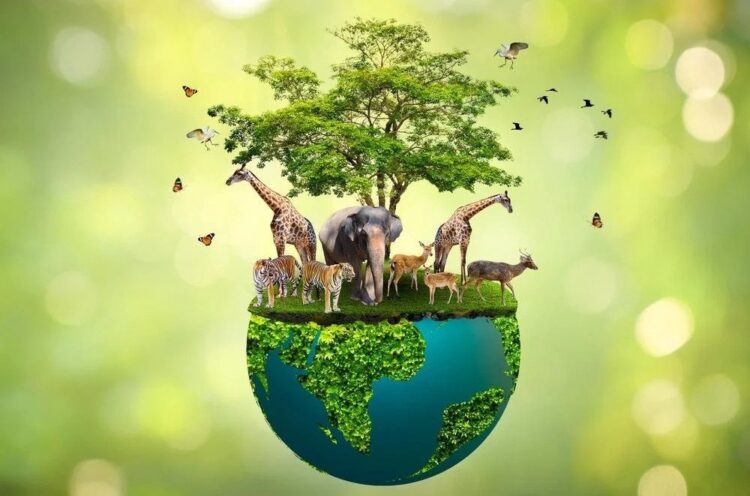In the vast and diverse canvas of our planet, nature weaves an extraordinary tapestry of wildlife, showcasing an enigmatic masterpiece that captivates our senses and nourishes our souls. From the depths of the oceans to the soaring heights of mountains, from dense rainforests to expansive savannas, Earth’s wildlife inhabits every nook and cranny, revealing a rich and intricate web of life.
The diversity of wildlife on our planet is simply astounding. Countless species, each with its own unique traits and adaptations, coexist in delicate balance. From the mighty African elephant, with its imposing presence and gentle demeanor, to the intricate dance of colors displayed by the smallest hummingbird, nature has fashioned a kaleidoscope of life forms that constantly surprise and awe us.
One cannot discuss the tapestry of wildlife without marveling at the awe-inspiring world beneath the waves. The oceans, covering more than 70% of Earth’s surface, harbor an astonishing array of marine life. Coral reefs, teeming with vibrant fish and intricate invertebrates, offer a glimpse into a mesmerizing underwater realm. From the graceful movements of dolphins and whales to the delicate dance of sea turtles, the oceans enchant us with their hidden treasures.
Moving from the depths of the oceans to the vast expanse of land, we encounter a multitude of terrestrial ecosystems, each supporting its own unique cast of characters. Dense rainforests, often referred to as the lungs of the Earth, harbor an incredible diversity of species, many of which are still waiting to be discovered. Majestic big cats roam the savannas, their presence commanding both respect and admiration. In the icy realms of the Arctic and Antarctic, resilient polar bears and penguins brave the harshest of conditions, captivating our hearts.
The intricate interplay between predators and prey, the symbiotic relationships between plants and animals, and the astonishing adaptations that allow species to survive in extreme environments are all part of the mesmerizing narrative that nature unfolds. From the camouflage of chameleons to the wingspan of eagles, from the intricate nests of birds to the silent hunting strategies of big cats, wildlife’s secrets are as fascinating as they are diverse.
However, the delicate threads that weave this magnificent tapestry are under threat. Human activities, such as habitat destruction, pollution, climate change, and illegal wildlife trade, have pushed many species to the brink of extinction. The loss of even a single species has far-reaching consequences, disrupting entire ecosystems and diminishing the resilience of our planet.
Conservation efforts and raising awareness about the importance of preserving our wildlife are more crucial than ever. It is our responsibility to protect and cherish the natural heritage that has been entrusted to us. By promoting sustainable practices, supporting conservation organizations, and educating future generations, we can ensure that the extraordinary tapestry of wildlife continues to inspire and sustain us.
The study and exploration of wildlife hold endless possibilities for scientific discovery and awe-inspiring experiences. Through advancements in technology, we are gaining new insights into the behavior and biology of species, unraveling the mysteries of their existence. Yet, there is still so much to learn and understand, urging us to continue our efforts in safeguarding the natural world.
The tapestry of wildlife is not just a source of wonder; it is also a reflection of our own place within the intricate web of life. As we appreciate the extraordinary diversity of species, we come to recognize the interconnectedness of all living things and our shared responsibility to protect and preserve our planet.
Nature’s enigmatic masterpiece, the extraordinary tapestry of wildlife, beckons us to marvel at its wonders, to protect its fragile threads, and to ensure that future generations can also bear witness to its timeless beauty.
One of the most remarkable aspects of the tapestry of wildlife is the intricate web of ecological relationships that bind different species together. From pollination partnerships between flowers and bees to the mutually beneficial interactions between predators and their prey, nature has crafted a delicate balance that ensures the survival and flourishing of countless organisms. Each species plays a unique role, contributing to the overall resilience and functioning of the ecosystem.
Take, for instance, the fascinating phenomenon of symbiosis. In the depths of the ocean, tiny cleaner fish provide a vital service by removing parasites from the bodies of larger fish, forming a symbiotic relationship that benefits both parties involved. Similarly, certain birds act as “cleaners” by picking ticks and parasites off the hides of large mammals, forging a mutually advantageous bond. These intricate partnerships demonstrate the interconnectedness of life and the remarkable ways in which different species rely on one another for survival.
Furthermore, the tapestry of wildlife is an ever-evolving masterpiece, shaped by millions of years of evolutionary processes. Through natural selection, species have developed remarkable adaptations that allow them to thrive in their respective habitats. From the long necks of giraffes, enabling them to reach high leaves, to the specialized beaks of finches, suited to their particular diets, the diversity of form and function in the animal kingdom is a testament to the power of evolution.
The enigmatic nature of the tapestry of wildlife also lies in its ability to evoke a sense of wonder and awe within us. Observing the grace and agility of a hunting cheetah, the intricate courtship rituals of birds-of-paradise, or the delicate dance of fireflies illuminating a summer night, we are reminded of the immense beauty that exists in the natural world. These encounters with wildlife have the power to inspire, connect us to something greater than ourselves, and instill a deep appreciation for the intricate tapestry of life.
However, the unfolding story of wildlife also carries a sense of urgency and responsibility. As human activities continue to impact the delicate balance of ecosystems, many species face the threat of extinction. The loss of iconic species, such as the majestic tiger or the gentle giant panda, not only diminishes the richness of the tapestry but also signifies the degradation of our planet’s natural heritage.
Conservation initiatives and sustainable practices are essential to preserving the extraordinary tapestry of wildlife. Efforts to protect and restore habitats, combat poaching and illegal trade, and promote responsible tourism are critical steps towards ensuring the survival of endangered species and the preservation of their ecosystems. Additionally, engaging local communities and fostering a sense of stewardship for nature can create a lasting impact in safeguarding the biodiversity that enriches our lives.
In conclusion, the tapestry of wildlife is a testament to the remarkable diversity, interconnectedness, and resilience of life on our planet. Its enigmatic masterpiece unfolds through the intricate relationships, adaptations, and stories of countless species. As we unravel its mysteries, we must also shoulder the responsibility of protecting and preserving this invaluable heritage for future generations. By embracing sustainable practices, supporting conservation efforts, and cultivating a deep appreciation for the natural world, we can ensure that the extraordinary tapestry of wildlife continues to inspire, captivate, and sustain us for generations to come.



No Comments
Leave Comment